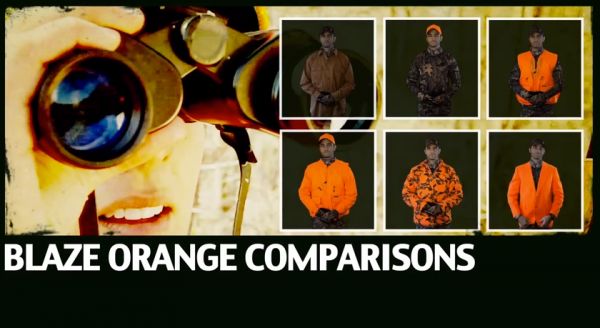
Deer hunters reminded orange is required by law
With deer season in full swing across, the Louisiana Department of Wildlife and Fisheries is reminding hunters that fluorescent orange is not only an important safety practice, but it’s required by law.
According to a press release, during the open firearms season for deer, any hunter in possession of buckshot, slugs, a primitive firearm or centerfire rifle during the open firearms season for deer must display on their head, chest and/or back a minimum of 400 square inches of hunter orange.
Some exceptions to the 400-square-inch rule include:
1. Hunters on private land may wear a hunter orange cap or hat instead of the 400 square inches of hunter orange.
2. Hunters on legally posted and privately owned land are not required to display hunter orange while hunting from an elevated stand. However, hunters must display the required hunter orange while walking to and from their elevated stand.
3. Hunters using archery equipment are not required to display hunter orange when hunting on legally posted land where firearm hunting is not allowed by agreement of the landowner or lessee.
4. All hunters (except waterfowl and dove hunters) on Wildlife Management Areas must wear a hunter orange cap in addition to the hunter orange on their chest/back when a firearms season for deer is open on the WMA.
Hunter orange is an unnatural color and dramatically improves a hunter’s visibility to other hunters, the release states.
While some hunters are concerned that deer will be alerted to their presence if they wear hunter orange, research into deer vision indicates that while deer see color, they don’t see it the way most humans do.
Deer are essentially red-green color blind, meaning that red, green and orange all look about the same to a deer. Hunter orange does not look much different to a deer than the various shades of green clothing many hunters wear.
In addition to the inability to distinguish between some colors, deer do not have very sharp vision. Their inability to see fine details means that deer are unlikely to detect a motionless hunter, even when the hunter is wearing hunter orange.
Most of the time, when a hunter is detected by a deer, it is because of the hunter’s movement or scent, according to the release. Hunter orange is particularly important in heavy cover and during the low-light hours in the early morning and late afternoon when visibility is reduced.
In all conditions, hunters must take the time to positively identify their target and what is beyond it before they fire a shot. Wearing hunter orange will help keep hunters safe and in compliance with the law.
To watch a video showing the effectiveness of hunter orange, click here.


